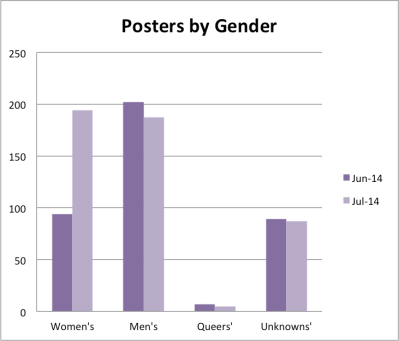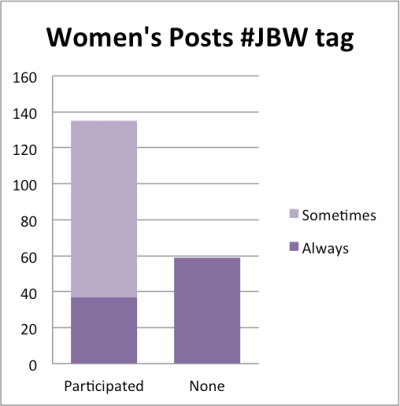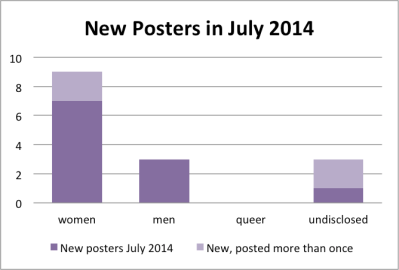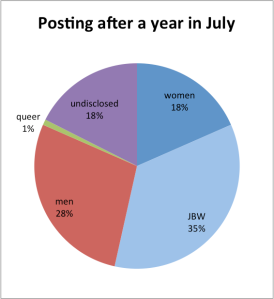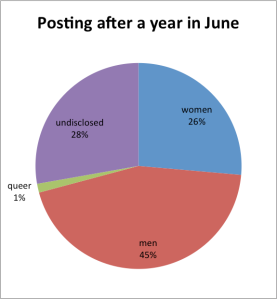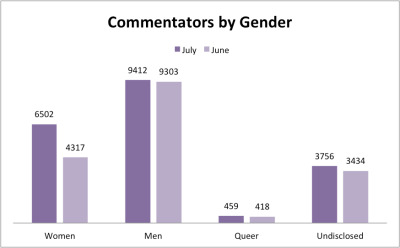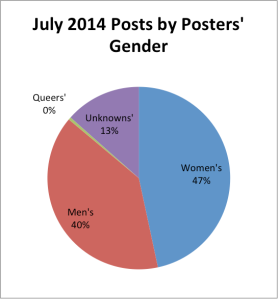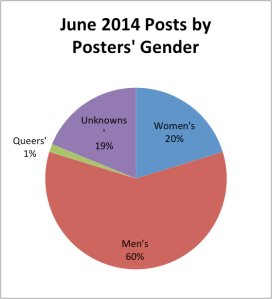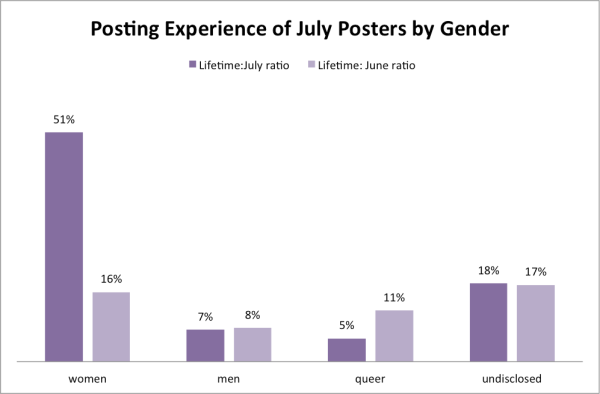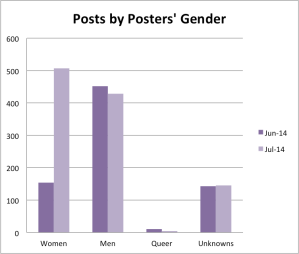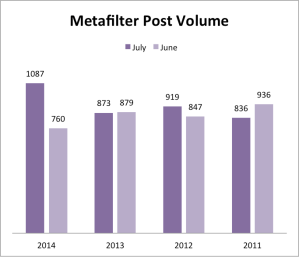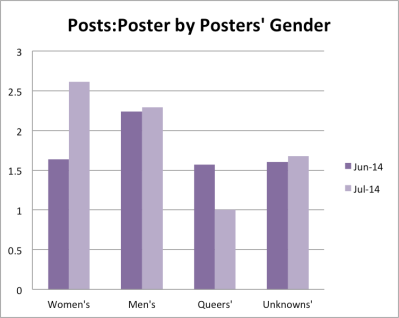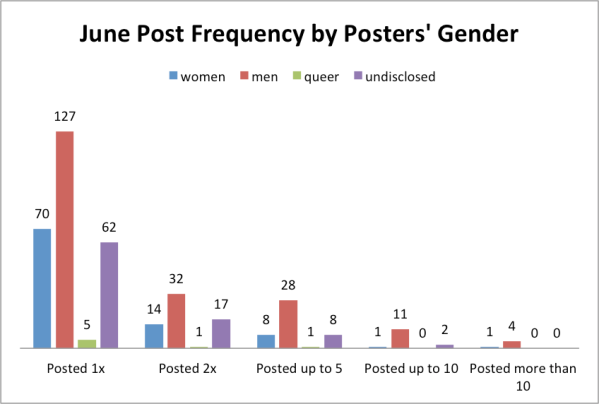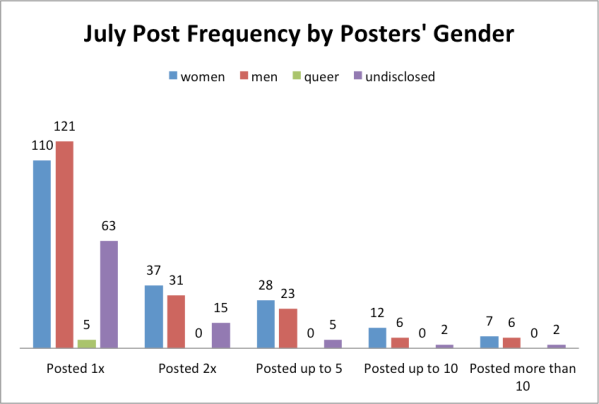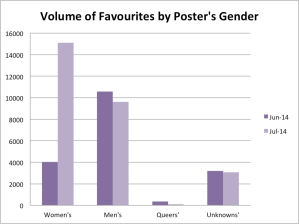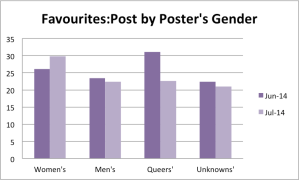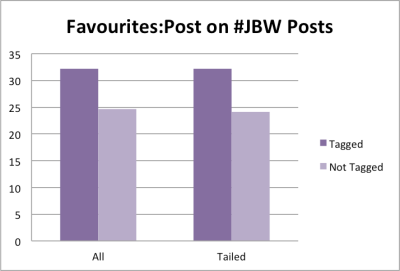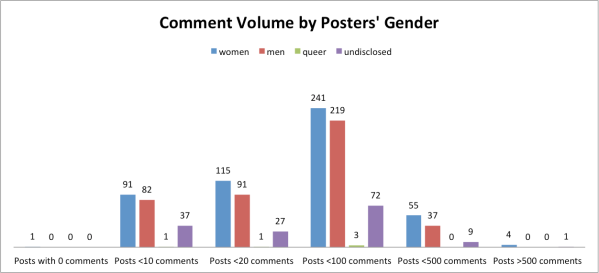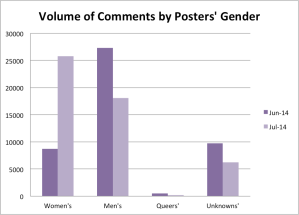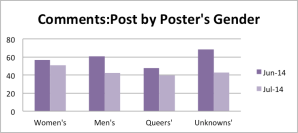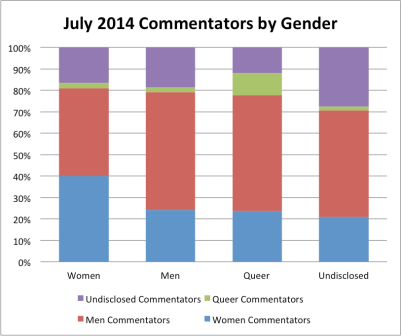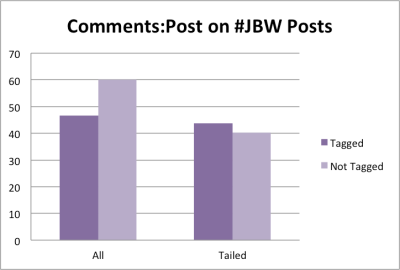Poems 52: The Peace of Wild Things (Wendell Berry)
When despair for the world grows in me
and I wake in the night at the least sound
in fear of what my life and my children’s lives may be,
I go and lie down where the wood drake
rests in his beauty on the water, and the great heron feeds.
I come into the peace of wild things
who do not tax their lives with forethought
of grief. I come into the presence of still water.
And I feel above me the day-blind stars
waiting with their light. For a time
I rest in the grace of the world, and am free.
This drove me slightly crazy in memorising because I had the flu and the lines don’t scan. The syllable count for each line varies without structure and the sentences are all variable lengths and there are barely any internal assonances or repeated or linked phrases so in the end, it feels much more like a prose paragraph that has been cut at random. Spoken aloud, the lines have the rhythm of someone speaking plainly and not reciting.
I am glad to have it finally stuck in my head. The first line that did was And I feel above me the day-blind stars waiting with their light because I have when looking at the day sky thought often that the stars are there, only out of sight. The poem has an odd tension about anthropomorphising the natural world, where ‘forethought of grief’ is not felt. He doesn’t deny a state of emotion to nature, because the wood drake rests, the stars wait, but rather the anxious creation of emotion to an uncertain future.
I read Fr. Thomas Hopko’s 55 Maxims last week, and one line struck me in consternation: “Flee imagination, fantasy, analysis, figuring things out.”
Imagination, fantasy and analysis are terms I use easily for very good things: the act of creating a story with people and inhabiting them, of creating new ideas from different scattered parts, of looking at a multitude of voices and accounts and drawing out a deeper understanding.
It seemed strange, almost hypocritical to urge people to flee those things, when Fr Hopko’s writings certainly involved them.
But in Berry’s poem, it isn’t fear that counters peace, but despair and fear of what lies ahead, what might be. Animals certainly experience fear, but they do not sacrifice a part of their present emotional experience for future worries.
And that’s what I think is meant by Hopko too. To create and to understand, yes. But to take the present and pull it apart out of fear and uncertainty with our own anxious imaginings and worried fantasies, in pursuit of a false sense of control rather than acceptance, is to rob ourselves.
In this poem, the narrator goes to nature and comes into a place to rest. There’s a sense of movement towards a still point, waiting, resting and being free. There is no action and time pauses. He does not need to do anything with the animals or to change them, simply to be there.
I’ve put one of his books, The Long-Legged House, on order at our library. I haven’t read many naturalist essays for a long time.

I used to leave the house as a child and wander around the garden or neighbourhood at night because it was so quiet and peaceful. Now, when I walk through a park or by the canal near our house, I stop at the flight of an egret and there is no need to do anything but watch the bird glide over the water and remember the day-blind stars waiting with their light.
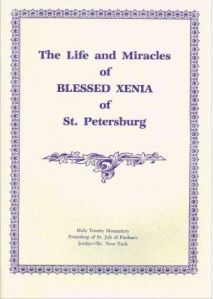 The Life and Miracles of Blessed Xenia of St. Petersburg (Great Ascetics of Russia) is a 79 page stapled pamphlet and I’ve read it before, so it was naturally my first choice for the daunting list of 52 books of theology I had set myself to read this year.
The Life and Miracles of Blessed Xenia of St. Petersburg (Great Ascetics of Russia) is a 79 page stapled pamphlet and I’ve read it before, so it was naturally my first choice for the daunting list of 52 books of theology I had set myself to read this year.
When I was received into the Orthodox Church, one question like most converts is what name to pick, because the tradition is to be named for a particular saint whose namesday then becomes your namesday, and far more important a date than your own birthday, a tradition that is a lot easier to admire than put into practice, especially with small children who are wondering why they don’t have a birthday like other kids.
I had mostly settled on St Hilda of Whitby who is pretty rocking as a woman of administrative brilliance, teaching and nurturing and founding entire communities. I had been reading a lot of Ellis Peters too.
My priest told me the week before that I was going to be named Xenia after St Xenia of St Petersburg, here was her icon and that was that.
There isn’t much in historical records about St Xenia, but there are a fair amount of stories and traditions recorded shortly after she died, as she had already become known locally as a Fool for Christ saint.
This little book is split between about 20 pages at the front detailing what is known of her life and the stories collected – not all, because I’ve heard some more such as when she kicked over a big vat of expensive honey in the marketplace, and walked off leaving behind the bewildered and angry shopkeeper who finally saw a festering rat revealed at the bottom of the vat – but it is a good account of her life, with notes on what is recorded and supported, what is by way of memory and story.
 The second part is a compilation of stories from people who prayed to St Xenia for help. During her life and after she was known to give help for children, marriages, homes and jobs – the ordinary things of life. These stories range from a few paragraphs to several pages, and are all by different writers.
The second part is a compilation of stories from people who prayed to St Xenia for help. During her life and after she was known to give help for children, marriages, homes and jobs – the ordinary things of life. These stories range from a few paragraphs to several pages, and are all by different writers.
The book is typeset, a copy of an older pamphlet. The stories end in the 1970s. There are two black and white illustrations in it of St Xenia’s icon and her grave in Smolensk cemetery. It is, as far as I know, the only book about St Xenia translated or written in English, and well-worth getting.
There is a novel – The Mirrored World – which I plan to read soon as part of this – based on her life as well.
And what came of reading this:
- I ended up wondering about the practices of Molieben and Panikhida referred throughout the story, and learned that a Molieben is a service where intervention is asked, often addressing a particular saint, for help, a form of public shared prayer. A Panikhida is a memorial service that includes much of the same service as a Molieben, but is meant as prayers for the departed.I plan to ask the priests I know more about the practical part of these services, because I’ve only really seen the Panikhida, and occasionally blessings for people going to travel or who are ill, that were at the end of regular liturgy services.
- I was reminded again how much I resist the supernatural element of miracles. I do not believe in a “two-story” universe, and I profoundly believe in science and integrating those two is a struggle. I’m grateful for the gift of mystery in orthodox theology – how does bread and wine through communion become the blood and flesh of God? A mystery! And with miracles, I know and yet I don’t.
Pratchett in Small Gods is how I mostly cope: “Weeping statues, and wine made out of water, a mere quantum-mechanistic-tunnel effect that’d happen anyway if you were prepared to wait zillions of years. As if the turning of sunlight into wine, by means of vines and grapes and time and enzymes wasn’t a thousand times more impressive and happened all the time.”
- I thought about the Smolensk cemetery where St Xenia is buried and for the first time, started to seriously think about going to St Peterburg on a pilgrimage. Friends of mine have gone on pilgrimages, but I am a solitary and lazy creature, so the thought of getting up at four am to go to a monastery and stand outside for a few hours then eat dry bread and go to another church and stand for many hours is not compelling. But they speak with such joy of their pilgrimages, and reading about the chapel over her grave, closed up during the communist era so that people would stand around it quietly praying and slip little scraps of paper with prayers into the cracks on the walls – I begin to think yes.
- I thought about one of the common threads in the stories told about her interventions, that people turned to ask for help only when they were nearly homeless, or in despair, and that the saints are such a ragbag lot of people. You’ll have an illiterate shepherd next to a scholarly prince next to an ex-courtesan nun. Yet in all their lives, there’s something that answered to God. It’s hard sometimes to think of the God who made galaxies and is eternal, or even Christ who was human as well, for our own grubby petty problems.
The saints are in our company though, people who lived and struggled and floundered, and to ask a woman who was born wealthy and by all accounts, fairly empty-headed before being widowed early and then lived on the streets, begging and jeered at – she’s the kind of Saint you would ask in for a cup of tea, and talk to her and listen because her life was so much more and still, the same fabric as our own.
- I love St Xenia. That was probably the one thing I learned most from re-reading this. I don’t know why my priest chose her, but I am grateful he did because I love her. I have several icons of St Xenia, including a tiny one from her chapel in Russia, and I stop and pray before them at least once a day. She is part of my day, the first saint I turn to ask for help, and someone whose courage and love serves as a guide in my own life. I love her so much.
Baking 52: Banana Cake
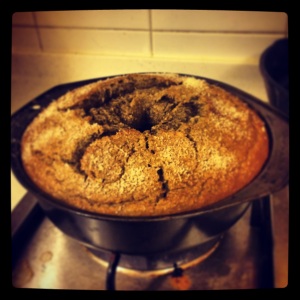 My mother made banana cake using the Edmonds cookbook recipe, a New Zealand staple. I remember it being slightly spicy, speckled and banana-rich, but when I’ve tried to recreate that with the NZ recipe, I get a perfectly respectable plain banana cake that is nowhere close to my memory.
My mother made banana cake using the Edmonds cookbook recipe, a New Zealand staple. I remember it being slightly spicy, speckled and banana-rich, but when I’ve tried to recreate that with the NZ recipe, I get a perfectly respectable plain banana cake that is nowhere close to my memory.
I decided, as one does at four am in the morning when the toddler is finally asleep again, that I needed cake for breakfast. I had a few recipes bookmarked for this and in the comments on one recipe suggested adding coconut flakes and coconut milk to replace some of the flour and milk respectively.
Again, as I told my son when he saw me measuring out baking powder by shaking a pile into my palm, this is not an exact recipe. It doesn’t have to be, because banana cake is a very moist and forgiving recipe with fairly strong flavours.
Start by turning on the oven to about 160 celsius. Then I mashed up some bananas with a teaspoon of vanilla essence. I had some squishy pisang-type bananas, the little ones, and popped six of them in to blend briefly and set aside in a bowl.
I didn’t clean the thermomix after that, but tipped in 150g of butter and about 120g of brown sugar. It should be the same amount, but I cut back on the sugar because the bananas are so sweet already. I creamed it (Setting 4/10 seconds or so) and then added two eggs, one at a time with a brief pulse to blend.
I didn’t habe any self-raising flour, so for about 200g of plain flour, I added a generous teaspoonful of baking powder, plus a scant teaspoon of baking soda. I added another 40g of dessicated coconut, and a generous teaspoon or so of ground nutmeg and cinnamon each, and then decided to replace the milk entirely with a packet of coconut cream because – well, it was very early in the morning and I hadn’t had any coffee yet and I thought bugger it, see what happens. I meant to add only about 50g of cream, but ended up tipping all of it in, about 100g.
Then it was all mixed for about 10 seconds twice on speed 4, stopping to push down the sides. It was lovely thick batter that filled the round tin up. I sprinkled some more dessicated coconut on top and set the oven rack a little lower so the coconut would toast and not burn by the time the cake was ready. I check after 40minutes, gave it another 5 minutes to get golden on top and checked if a knife came out clean and let it cool down for a while.
The cake rose well and cut into big tender slices. The taste was very coconutty – more like a very moist, slightly banana-flavoured coconut cake. Half of it has already been eaten by my family.
Next time, I’d like to try a vegan variation, with applesauce for the eggs and vegetable oil for the butter, no coconut to replace the flour, and possibly some honey with the sugar, and coconut milk instead of cream. And possibly some allspice.
Handmade 52: Felt diapers
A pair of felt diapers, mostly from this guide. I’m sick, so I decided to do something very simple and Maggie has been swaddling and diapering all her toys with random cloths, so her Elmo dolls (she got a pair of identical Elmos for Christmas, dubbed the Elmo Twins, big brothers to her baby Elmo – basically our house is overrun with Elmos everywhere) got orange felt diapers. The orange felt is leftover from making her Elmo costume too.
Scissors, stick-on velcro and some felt. Next up, felt bandaids so we can preserve our stock of actual bandaids.
Poems 52: Heaven-haven (Gerald Manley Hopkins)
A nun takes the veil
I have asked to go
Where springs not fail,
To fields where flies no sharp and sided hail
And a few lilies blow.
And I have asked to be
Where no storms come,
Where the green swell is in the havens dumb,
And out of the swing of the sea.
I knew this was the first poem I wanted to memorize this year because I read it repeatedly when I last visited my father before he died. I had brought along a copy of The Rattle Bag, an anthology of poems that to this day gets packed if I am away for a night or more from home because it is almost a commonplace book of poets and there is always something in it at 4am while it rains.
I didn’t consciously try to memorize it then, just read it over and over until it was a polished touchstone. When I read it now, it has laid over the poem itself, silent cold mornings, standing in my parents’ garden and the sense of waiting for death and life.
I always think of island monasteries and nunneries here, and the question of retreat from the larger world to a quieter place being implied, but that Hopkins, as an often unhappy Jesuit, would have known, becoming a monk or a nun is not retreat from the world but instead taking on a more intense and in some ways much harder community. A priest I know liked to say that being a monk had meant all the commitment of marriage, but to thirty-odd other monks in your monastery, not just one person.
To me, the poem is about choosing the path of a nun towards the life beyond, not choosing life in a nunnery as a safer quieter option than the world. Every time I read it, I wonder what she asks exactly, especially that first she asks to go, and then she asks to be, and for me the most opaque line – in the havens dumb. Why is the green swell silenced?
A couple of notes on some partial meanings:
- A few lilies blow – the word blow is here the older form of bloom
- The green swell is that quieter part of waves nearer the shore
- havens being a safe port or refuge, as in the gray havens
- the swing of the sea referring to the tides
And finally, on memorizing it: so much easier a little each day. Because it’s next to the sink, I ended up reading it over and over. I would close my eyes and attempt to recite it until I had it down, and now it’s pretty stuck.
I’m handwriting all of the 52 poems into a small notebook as my own commonplace anthology at the end of the year.
Baking 52: Bread and Butter Pudding
We had an uneaten baguette, rare in this household where bread and our fridge vanishes into food blackholes called teenagers, so I sliced it up and left it in a half-covered bowl to go stale faster.
I read several bread-and-butter recipes but decided that what I really wanted was to make a pudding that required very little preparation and could skip stages, so I cobbled together different versions.
First, I buttered the slices, and then tore them into 1″ sized pieces. I would skip that next time and try soaking the bread for longer because the soaked pieces fall apart much easier while stirring in the jam. I buttered the dish (a cast iron dutch oven) generously, so buttering the bread was redundant too. One recipe suggested pan-frying the bread in butter which sounds insanely delicious, but time-consuming and an extra thousand calories.
I had a 250g jar of double cream, so I matched that with the same amount of whole milk and four eggs. Some recipes use just the yolks, but that tastes too rich to me. I left out the sugar because I was going to stir in jam, but next time I would add about 2 tablespoons of sugar so the custard was very slightly sweet. I forgot to add vanilla, which I would definitely add a teaspoonful next time. I put it in the thermomix for 5 minutes on 90 degrees at speed four. In a pan, you would just heat this gently and stir it. You don’t have to cook the custard all the way – you can just mix it and leave it to cook in the dish itself. I warmed it because it mixed more smoothly, and it would melt in the sugar better.
Then I poured it over the bread – I used a large pot so the bread was only 1-2″ deep, and I think in general, bread and butter pudding is a shallow dish because you need a crisp brown top and a set inside, and in a deep dish by the time the inside set, the top would be burned.
Then the bit I liked the most -jam! I had some raspberry jam left, so we used that. I would buy apricot jam for this, but really any good jam will do. I put big spoonfuls on top of the soaked pudding and gently stirred it in because I wanted to have little spots and swirls of jam, not entirely blended. I would use about 1/2 jar of jam proportionally next time. So much nicer than sultanas or dried fruit. I sprinkled nutmeg over the top – one recipe suggested brown sugar that I might try with cinnamon instead.
Then I put the big dish into a roasting pan, filled the pan with water and very gingerly put the whole sheet in the middle of the oven at 170 celsius. Next time, I put the pan and dish in first, then pour in the water! I had water sloshing everywhere.
I left it to cook for about 45 minutes, checking every 5 minutes at the end. Once it looked nice and crispy, we took it out and tucked in. It was really good – not perfect, but solidly good. And I can report that leftovers reheat nicely for breakfast!
Next time, I’m going to serve it with either cold thin cream to pour over the hot pudding, or possibly greek yogurt. I’d like to try making it in little pots set closer to the grill as well so they cook faster.
I was really happy to make this and see how easy a water bath pudding actually is. Here’s hoping my kids leave some more bread to go stale!
Listicle Life
I decided that 2014 would be the year of lists. Last year was mostly about hanging on, not knowing if next week I’d be in the hospital or someone else would be, and just surviving past looming dangers. I liked writing lists and finishing things, not so much for finishing them but for setting out with them like a map to some new place.
I made an enormous spreadsheet with tabs for each goal the last week of December. My original list was about 30+ items, so I did end up narrowing it down. I started trying out some of the goals to see what I liked, and quickly discarded some. Pinterest and googling “52 week challenges” and the like helped give me some more ideas.
I also posted to Ask.Metafilter How to walk to Hobbiton and other 365/52 challenges to get some advice. The most directly useful points were:
- Plan the whole list ahead
- Prepare as much in advance for busy days
- Build in some slack so you can skip a day or two and still continue
- Public accountability (this goal and my family)
I like working for small rewards and colouring in dots, so I printed out a thousand tiny circles on a sheet of paper with a start date and have been circling each dot to give myself $1 for a 365-challenge, $5 for a 52 week challenge and $20 for a 12 month challenge. If I did them all in a year, it would be a lot but even if I only manage to do some of it, that’s still a chunk of change saved up. It’s not extra money so much as our half-hearted vacation fund that we keep meaning to save to. I’ve wanted very much to take the family on a very short trip to an island nearby and this would be enough to do that three times this year which is an extremely cheerful goal.
12 Months:
- 12 chapters to write
- 12 dresses to sew
- 12 museums to visit
- 12 plays and concerts to watch
52 Weeks
- 52 baking challenges
- 52 books of theology
- 52 new braids
- 52 Family Movie Nights
- 52 handmade gifts
- 52 One bite at a Time projects
- 52 organizing challenges
- 52 parks to visit (yes, there are more than 52 parks in Singapore!)
- 52 poems to memorize
- 52 songs to teach Maggie
- 52 vegan recipes
365 days
- 365 instagram photos
- 365 Bible readings
- 365 thank you letters
- 365 walk home to Hobbiton (About 2,615km so that works out to about 7km a day)
- 365 Mandarin lessons
I built slack into all of these things, and prepped ahead – book lists, recipes printed out, poems pinned to a wall, booking tickets and so on.
Best of all, I found a skinny purple notebook while I was looking for index cards that turned out to be a goal-setting journal. It’s called Plannerisms and is actually really bloody lovely. I write out the goals and then what I actually got done (and anything extra to cheer me up) to figure out how to get everything done, and the spreadsheet as a reference. I also put reminders into my online calendar so that I remember when to switch goal projects.
I don’t know if I’ll finish any of them. I don’t really care. It’s setting out to do them and discovering what I like on my lists that counts.
Notes from Phnom Penh, September 2011
- Difficult to feel sorry for my pregnancy nausea and clumsiness when I see far more pregnant women in the slums carrying loads of laundry and making their way across the tiny monkey bridges!
- The big community near Alexandra is severely flooded – the river has risen further than I can remember in the last ten years. The only way in or out of most of the slum is across a monkey bridge, which is basically a 5-inch wide plank with a single pole handrail at the side. If you are an adult, you walk slowly across with one hand on the handrail. If you are a pregnant foreigner, you do this with an arm flung out for balance and stare at the sky above, not the filthy brown water just underneath. If you are a small child, you run back and forth on tippy-toes shouting with glee “the fat foreign lady will fall!”
- I’m working on budgets and forms. For me, this is tremendously exciting and satisfying. Not so much for anyone else.
- We’ve just started what will be regular feedback from people in the community visited by or nearby the Advocacy Walks. We’re finally at the point where we can train more guides, and the walks are pretty close to what we want, but we’ve only done one big round of community feedback (no photographs, compensate us equally for time, have the visitors talk to us and not just ask questions) and we want to set up a cycle of feedback so the Walks keep improving.
Our new volunteer co-ordinator drew up a good survey and went to interview people, and came back with the initial round disappointed. “No-one has said anything negative.” Which is great – not because no-one said anything negative, but because he recognized that wasn’t likely. Someone always complains!
We went over and figured out that it’s most likely about trust. He’s new, and people in the community aren’t going to complain until they trust he’ll be fair and confidential. Same thing happens with our social workers, so we will have to wait 1-2 months to start getting real complaints.
We also talked about either a community meeting or putting up posters, and might focus on informing the coffeeshop owners in the communities with feedback posters to spread awareness of what the Advocacy Walks are about.
I have to re-jig the cost of them – we don’t make a profit from them directly really, but they’re great for prompting further fundraising from informed and passionate donors, but we want to add a percentage cut that will go into a community fund that we can use each month for community improvements like repairing the walkways or helping destitute families that don’t qualify for Riverkids’ usual programs. We’ve been doing that on-and-off, but directly pegging it to Advocacy Walks will be easier and more consistent.
- We’re going to switch focus on volunteers and try recruiting more Cambodian volunteers. We get a fair number of international volunteers applying without pushing already. We are going to start saying no to anyone who can’t do at least 6 weeks unless they have special skills. It looks like the really short structured trips we’ve been experimenting with are way easier for the staff and produce as much.
And no more English teaching unless you have actual ESL experience. For the past couple of months, we’ve had six English classes going. Two are taught by a local teacher who isn’t particularly highly-trained, and four by a mix of local and foreign volunteers. The teacher-led classes have zoomed past the volunteer classes. The kids enjoy being taught by the volunteers, but a local teacher with volunteers as classroom assistants (preferably local volunteers) will be way more effective and not much more expensive.
- And the debate over English class! We finally have an advanced english class organised for this month with an excellent teacher – but that’s it. I am not authorizing any more than 15-30 children, which is less than 10% of our students. There will be regular english classes for about 30% of them, and the rest will have no english classes.
Why? Because it’s a waste of money to do more. Yup, that’s me the evil despot saying it blunt as I can.
I have kids who don’t eat a decent meal each day. They’re beaten up at home. They’re struggling to learn their own language and stay in school.
Adding english classes, especially classes with a high standard that require concentration and discipline, that will cost $10-$20 a month per child – what does that do?
It’s money that could go to feeding the child, hours spent teaching them maths and Khmer so they can keep up at school, and more.
English classes are a luxury. For a talented kid, they’re within reach, but most of our kids will reach high school where they need some English, not university. And for those who are struggling to make it to Grade 6, to get a job waitressing or in a garment factory, English isn’t as useful as oh, about a million other things.
I think it’s because we want so much for these kids – we want them to get the same opportunities we did. But even if someone did give me a million dollars tomorrow, I still wouldn’t spend it on private schools and English lessons for all the kids. I’d spend it on social workers and meals and Khmer lessons first.
I’m going to make this an essay for our website to explain why we don’t fund more than a percentage of our kids on scholarships and English classes. And those are already funded by some awesome donors. We’re not looking for bright kids – we’re looking for hurt kids, and that’s what we focus on.
- I am so grateful to see things running smoothly here. We’re introducing a couple of big changes – the social department re-organisation and expansion (YAY!), the Direct Cash Aid pilot, the new curriculum and schedule for the Get Ready program – and cutting and expanding lots of other things, and it’s like a time-lapse film, seeing everything change slowly but surely. I love being superfluous.
Buffy and Ellis Peters
On the plane today, I read Brother Cadfael’s Penance, the last of the Ellis Peter’s series. They are beautiful mystery novels, written expertly in the way that seems perfectly simple and straightforward, but requires far more skill underneath to create a distinct world with eloquence.
And they’re set just after the great schism, so while they’re technically Catholic, the lives and thoughts described are as much ordinary Orthodox as Catholic. When your main character is a monk, it’s pretty much a given that religion matters, but Ellis Peters goes further in capturing what it’s like to live a life inside the rhythms of the church, where faith and theology are central, not set aside for a crisis or occasional Sundays.
Dostoevsky is the big feast of Orthodox literature, but Ellis Peters is a nourishing bowl of soup.
The past couple of months, I’ve been rewatching Buffy. Except for episode 16 of season five which I refuse to rewatch on grounds of sobbing helplessly for hours afterwards, I’ve had seasons running in loops in the background.
And it amazes me how good Buffy it is. How much the writers and actors loved the show, because there are details picked up and echoed and moments in the background where a character reacts almost unseen that add layers.
One of the things I love about the Orthodox services – the John Chrysostom liturgy in particular – is the way the service is structured as multiple interlocking circles. There’s the circle of the year, then the week, and the day, then within the service, moving towards the moment of communion, cycles of repentance and worship with key phrases repeated in greater depth in different ways.
Now, I’m not going all “A Canticle for Leibowitz” with Buffy (although how awesome would that be for a short story?), that rhythm exists in Buffy. Some of it is the structure imposed by a TV episode set within seasons, but much of is internal, with deliberate mirroring and repetition of ideas. Who they become grow from who they were (Oh, Willow!) and Glory and Ben are Buffy and Dawn, and Riley is Xander, and there’s so much about morality and ethics and humanity in it. Wisely, for a supernatural show (Yeah, I’m looking at you Castiel) Buffy very seldom touched on actual religion, but approaches the same ideas obliquely.
I liked Firefly well enough, and Angel even more.
But Buffy is the reason TV was invented.

